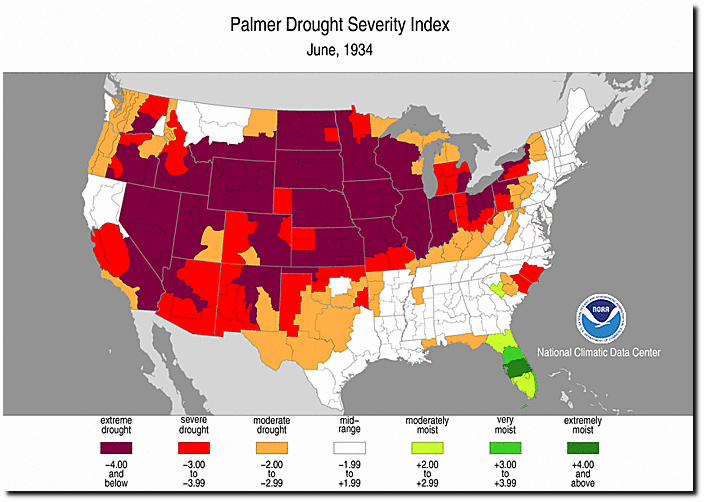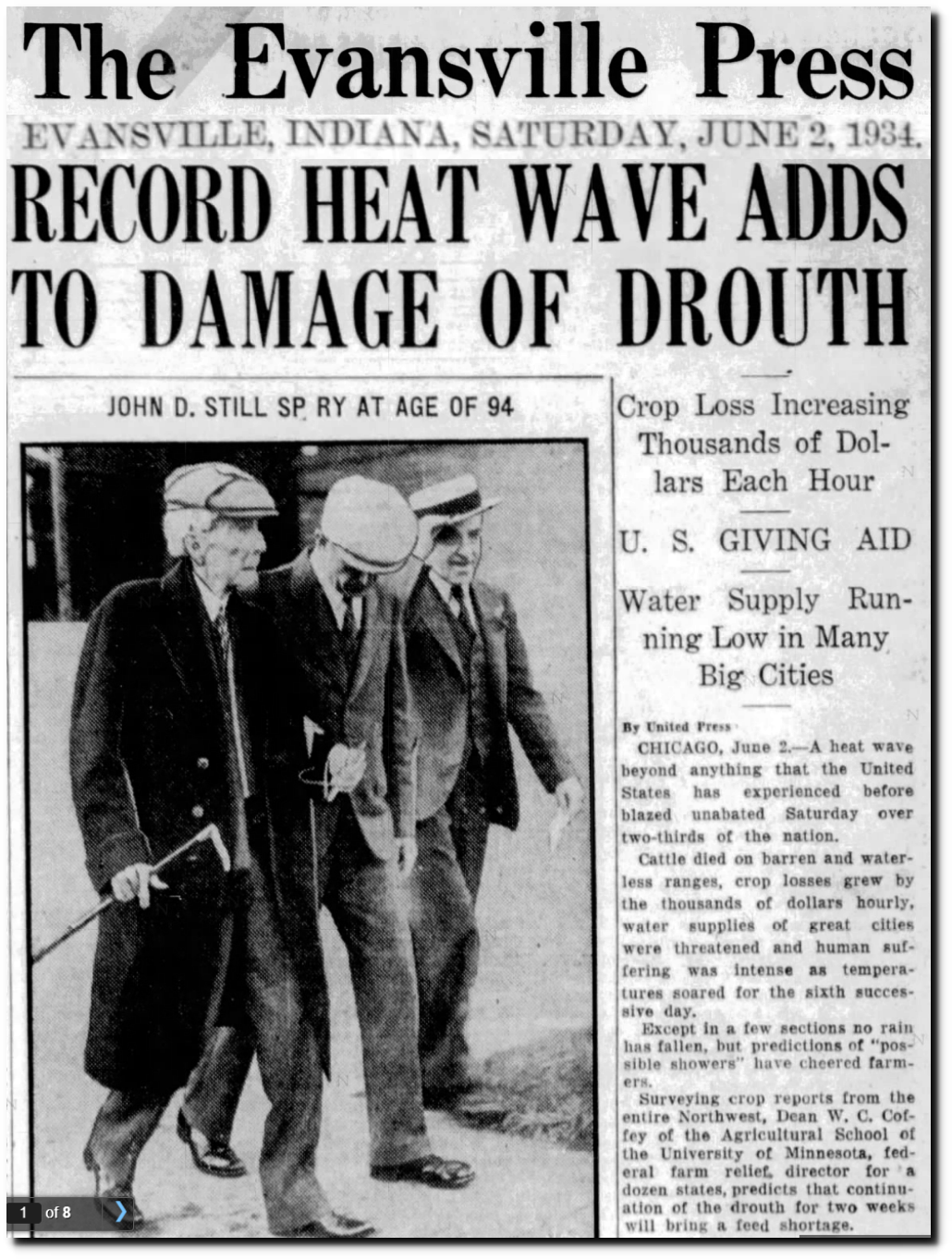“The New York Times
FRIDAY, JUNE 1, 1934
DROUGHT HASTENS ABOUT-FACE BY AAA ON CURBING CROPS.
Tugwell Says Farm Policy Can Be One of Expansion as Well as One of Restriction.
WORLD WHEAT PACT IS DIM,
That Grain Passes Dollar Mark in Chicago as Record Heat Burns Rainless Fields.
Special to The New York Times
WASHINGTON, May 31.—Confronted with an unprecedented drought which gives every prospect of major destructiveness to crops and livestock in the West and Northwest, an about face by the Agricultural Adjustment Administration on some of its production restriction policies was foreshadowed today. Coupled with this situation was uncertainty over the International Wheat Agreement.
Gradually increasing in intensity for several months, the drought has affected thirty-five States from the Rocky Mountains to New England, including Western New York. There is no relief in sight, J. B. Kincer, chief of the division of climate and crop weather of the Weather Bureau, said today.
Meanwhile, the prospective crop damage sent wheat above the dollar mark in the Chicago market today, while corn touched 61 cents, or 16 cents above the amount which the government lent to farmers on that crop.
Of the thirty-five States twenty of them are described as ‘‘severely affected.” In the other ten the condition is labeled ‘‘chronic.”
TimesMachine: June 1, 1934 – NYTimes.com
“By United Press
CHICAGO, June 2 A heat wave beyond anything that the United States has experienced before blazed unabated Saturday over two-thirds of the nation,Cattle died on barren and waterless ranges, crop losses grew by the thousands of dollars hourly, water supplies of great cities were threatened and human suffering was intense as temperatures soared for the sixth successive day,
Except in a few sections no rain has fallen, but predictions of “possible showers” have cheered farmers.
Surveying crop reports from the entire Northwest, Dean W, C, Coffey of the Agricultural School of ng University of Minnesota, fed farm relief, director for a dozen states, predicts that continuation of the drouth for two weeks will bring a feed shortage.”




